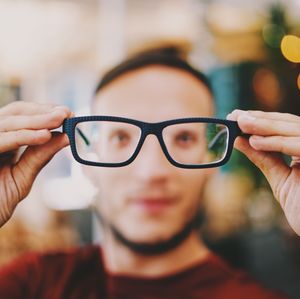The occipital lobe is the seat of most of the brain's visual cortex, allowing you to see and process stimuli from the external world and to assign meaning to and remember visual perceptions. Located just under the parietal lobe and above the temporal lobe, the occipital lobe is the brain's smallest lobe, but its functions are indispensable.
 |
| Occipital Lobe |
Anatomy
The occipital lobe is the smallest lobe accounting for only 18% of the total neocortical volume. The boundaries of the occipital lobe have been arbitrarily defined, giving it a triangular shape. It sits posterior to the temporal lobe and parietal lobes, underlying the occipital bone and overlying the tentorium cerebelli. Composed of three Brodmann areas:
- primary visual cortex (Brodmann area 17)
- secondary visual (association) cortex (Brodmann areas 18 and 19)
Blood supply: branches of the posterior cerebral artery (PCA)
Function
Mapping the visual world, which helps with both spatial reasoning and visual memory. Most vision involves some type of memory, since scanning the visual field requires you to recall that which you saw just a second ago.Although we know that the occipital lobe is dedicated to vision, this process is highly complex, and includes a number of separate functions. Those include:
- Determining color properties of the items in the visual field.
- Assessing distance, size, and depth.
- Identifying visual stimuli, particularly familiar faces and objects.
- Transmitting visual information to other brain regions so that those brain lobes can encode memories, assign meaning, craft appropriate motor and linguistic responses, and continually respond to information from the surrounding world.
- Receiving raw visual data from perceptual sensors in the eyes' retina.
Damage
 |
| Occipital Lobe |
Damage to the occipital lobe can include:
- Difficulty with locating objects in environment
- Difficulty with identifying colours (Colour Agnosia)
- Production of hallucinations
- Visual illusions - inaccurately seeing objects
- Word blindness - inability to recognise words
- Difficulty in recognizing drawn objects
- Inability to recognize the movement of an object (Movement Agnosia)
- Difficulties with reading and writing
Interaction
 |
| Occipital Lobe |
The occipital lobes primary role is to control vision however damage to other brain regions and body parts can inhibit vision. Some evidence suggests that, when the occipital lobe is damaged, nearby brain regions may be able to compensate for some of its functions.
The occipital lobe is heavily dependent on:
- The eyes, particularly the retinas, which take in and process visual information to then be further processed by the occipital lobe.
- The frontal lobe, which contains the brain's motor cortex. Without motor skills, the eyes cannot move or take in information from surrounding regions.
- The temporal lobe, which helps assign meaning to visual information, in addition to encoding it into memories.

0Comments